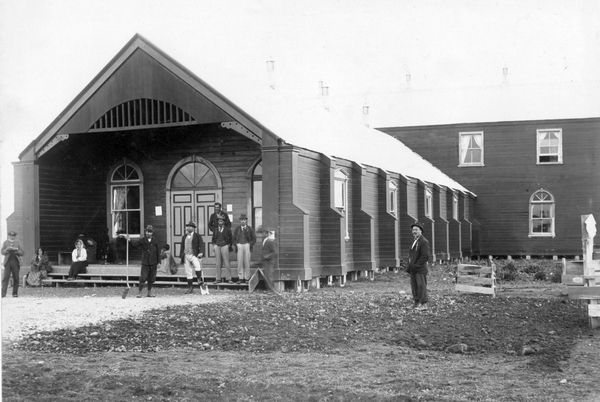
Herewini Street and Papawai Place
When the Government purchased the land for the township of Masterton a block near the town was reserved from sale, the owners instead donating the land to the Church of England. It was intended that it be used to establish a college for Maori children.
The land was known as the Bishop’s Reserve, as it had personally been given to Bishop Selwyn. It is now administered by a trust that uses the income from this land, and another similar block near Papawai, Greytown, to provide education grants. The trust, called the Papawai-Kaikokirikiri Trust, has developed some of the land, and constructed some streets.
One of these, off Akura Road, was to be named Keir Street by the Borough Council but following representations from the Trust Board, the Council decided to accept the Board’s proposal and named the street Herewini Street. Herewini is the Maori name for Selwyn.
The Trust also named Papawai Place, off Ngaumutawa Road, after the famous pa near Greytown. The pa was nationally famous in the late 1890s as the centre of the Maori Parliament movement, Kotahitanga.
Pic: The meeting house complex at Papawai, circa 1896
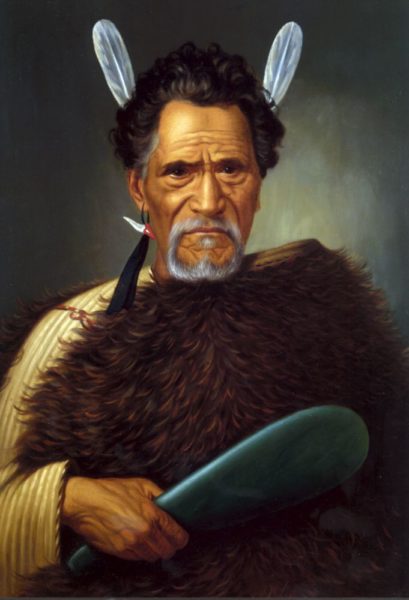
Akura Road and Ngaumutawa Road
Akura Road and Ngaumutawa Road bound the area of the Bishops Reserve.
Akura is named after an ancestress of the people from the area, known as Kura. A story recorded in the minute books of the Maori Land Court tells of Kura being so shamed by accusations of infidelity that she committed suicide.
Ngaumutawa means ovens of tawa, the native tree. It is possible the name has a more sinister meaning, as it may be Ngaumutaua, which sounds very similar but actually means “ovens of the war party”.
Ngaumutawa Road has had a number of different names. The northern section was sometimes called Whatman Road in local usage, and an attempt was made to change the legal name of the road to this, but it remained Ngaumutawa.
The southern portion of the road was known as Upper Manaia Road from High Street to the railway, and then Railway Road. The names were finally changed to just one, Ngaumutawa Road, in 1985.
Pic: Te Retimana Te Korou, the chief who lived at Akura and Ngaumutawa.
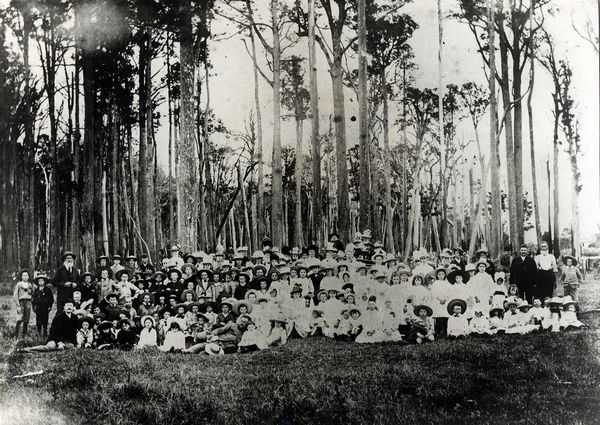
Makora Road
The Makoura Stream rises to the west of Masterton, the main tributary being the Makakaweka, named after weka birds made tapu by a tohunga. Various other streams (Waimateatea, Waipokaka, and Ngaumutawa) join it before they take the collective name of Makoura.
This has been a contentious name in the past, as various authorities have argued whether the name should be Makora or Makoura. "Ma" means stream, and "kora" means seagull, while "koura" means freshwater crayfish. It seems clear the stream should be Makoura.
When the new secondary school for the east side of Masterton was named Makora noted historian Keith Cairns protested strongly that the name should be Makoura, to no avail.
Eventually the school community decided that the name was wrong and it was changed to Makoura. The street that Makoura College is sited on remains Makora Road. This name was once applied to Johnstone Street, as it led to the district of Makora/ Makoura.
Pic: Elkin's Bush at Makora Road, was a popular picnic site in the 1890s.
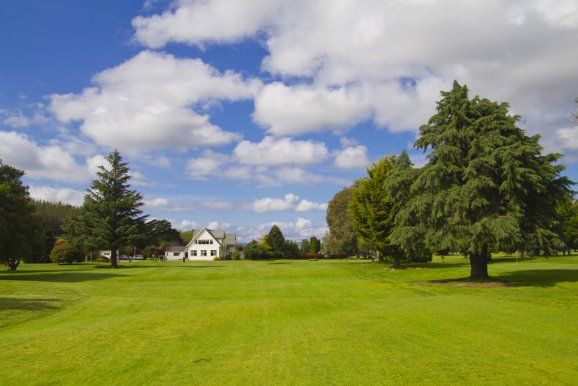
Manaia Road and Mahunga Drive
One of the first stations in the Masterton area owned by W.H. Donald was called Manaia. According to local Maori the name derives from a Wairarapa name given to a medicinal shrub, similar to a koromiko, although the term also means a grassy plain. Manaia Road takes its name from the Maori name for the district. Ihaia Whakamairu, the son-in-law of Te Retimana Te Korou, involved in the sale of Masterton, lived in the area.
The Donald family also own land on the banks of the Waipoua River, land that includes the site of the old Kaikokirikiri pa of Te Retimana Te Korou. This farm is called Mahunga, its name deriving from the Maori word for the top of the head. Mahunga Drive leads from the end of Oxford Street to the Mahunga Golf Course
Pic: Looking down the fairway at the Mahunga Golf Club's headquarters,.
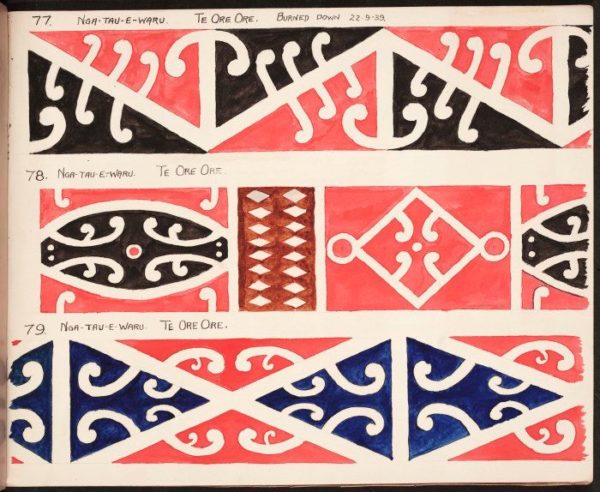
Te Ore Ore Road
Te Ore Ore Road takes its name from the district it leads to, although in the past it has had a number of other names - Taueru Road and Castlepoint Road being just two of them.
Te Ore Ore is said to have obtained its name when a visiting chief stepped out of the bush on the hills above the Te Ore Ore plains and saw the flat fertile valley spread out below him. He was said to have been so pleasantly surprised that he gave a deep chortle, “ore ore” meaning to shake.
Another version of the story says the laughing came later, after he met a particularly attractive young female member of the local iwi.
Pic: The kowhaiwhai patterns inside the original meeting house at Te Ore were spectacular.
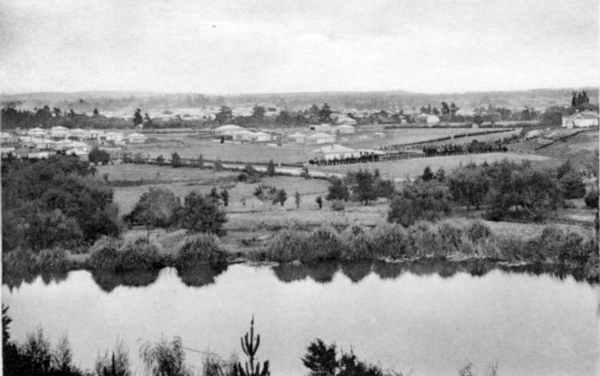
Opaki Road
The main road north (or the Great North Eastern Highway as it was sometimes referred to) is called Opaki Road as it crosses Lansdowne. This is clearly because it leads to the district of Opaki. The word “paki” normally means clear or fine, so some suggest the name Opaki means fine, or dry, place. One authority states, however, that it refers to the dressing (pakipaki) of totara bark for medicinal use, while another suggests it could be a personal name.
Pic: Looking across the Lansdowne Dam at Opaki Road, circa 1910
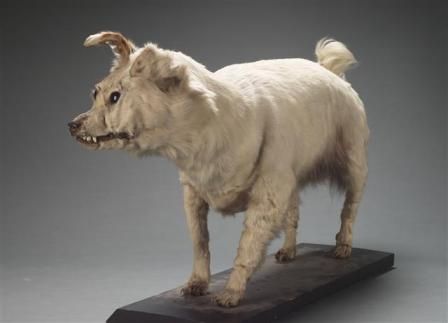
Kuripuni Street
Kuripuni was the personal name of a Ngati Kahungunu ancestor. It is unclear how the name came about, however, as it has a number of potential meanings. ‘Kuri’ means dog, and ‘puni’ can mean camp, so some claim the name means ‘dog camp’, but the word also means closed up, so others say the word Kuripuni means ‘closed up dog’. Keith Cairns, local historian brought up in the area, stated that it could have meant a stream blocked by the carcass of a dog.
It is certain that the local population of Kuripuni was not always happy about the connotations, and at various times they tried to have the name changed.
Kuripuni Street was gazetted for change at a meeting of the Masterton Borough Council Street Naming Committee held on 11 December, 1905. At this meeting, which changed the names of a number of streets, it was decided that Kuripuni Street should be Heron Street, after previous mayor George Heron.
The move was not followed up, and the street remained Kuripuni Street.
Not so Kuripuni Railway Station. The station name was changed shortly afterward to Potaerau, before being finally changed to Solway. In the same era there was a strong call to rename the Kuripuni area as Masterton South.
Pic: Kuri - Maori dogs - died out shortly after the arrival of pakeha.
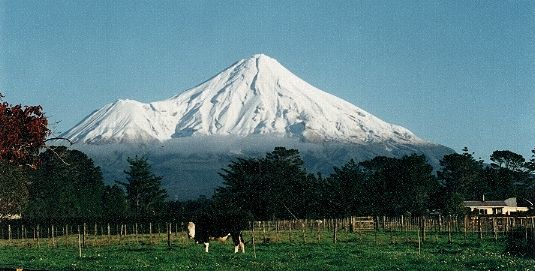
Taranaki Street, Okato Place and Patea Place
When a new street was constructed off South Road in 1978 the Masterton Borough Council approached “a local group” to find a number of Maori names suitable for use in the area. After receiving no reply the Council named the streets themselves, deciding to use “well-known Maori geographic features or place names.” They elected to name the first street Taranaki Street, after the mountain.
This policy was followed up and two other streets were given names of towns in the Taranaki region - Patea Place and Okato Place.
Pic: The near perfect form of Taranaki, Mount Egmont.
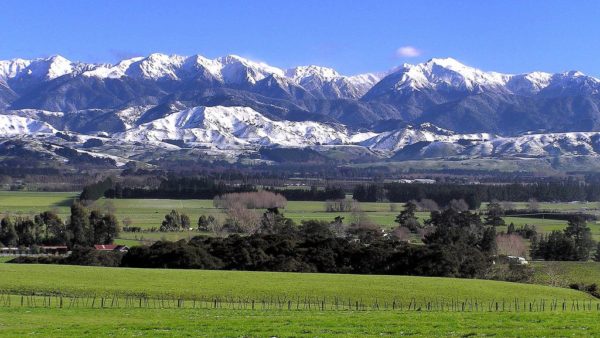
Tararua Street
Tararua Street was named in honour of the Tararua Mountains, supposedly because there was a good view of the mountains from the area. The view is diminished today by tree growth.
There are a number of explanations of the name Tararua.
Some say there were named by Rangitane chief Whatonga after his two wives, Hotuwaipara and Reretua.
Others say the name comes from two maunqa , Mitre and Jumbo, known to Maori as Pukemoamo and Pukeahurangi. They say it stems from an incident when a Maori chief, Rangikaikore, lost two spear tips (also known as tara) while hunting in the region.
The Maori name for Mount Holdsworth is Taratahi, one peak.
Pic: The Tararua mountains make a show after a winter snowfall. Photo - Michael Toohey.
Kokiri Place

The Waipoua River, near the site of the old Kaikokirikiri pa.
In 2006, the street previously known as Cornwall Place was renamed Kokiri Place at the suggestion of Rangitaane of Wairarapa, whose offices are situated there. The name refers to a sporting activity at Kaikokirikiri paa, on the banks of the Waipoua River. Inhabitants lined the banks of the river and on the call of “Kokiri” raced down the bank and swam across the river. The first to cross was the winner.
Pic:










